Imagine you could only pick one color (aside from green) to add to your garden. I'd want to add gray. Now, that might sound crazy considering the potential rainbow of hues, but gray is the perfect complement in any garden. This silvery tone works beautifully with green, and there is a huge variety of plants with gray foliage to choose from. Limit yourself to one bloom color and your garden might be very boring indeed. Add layers of gray and green, and your garden will be interesting all year.
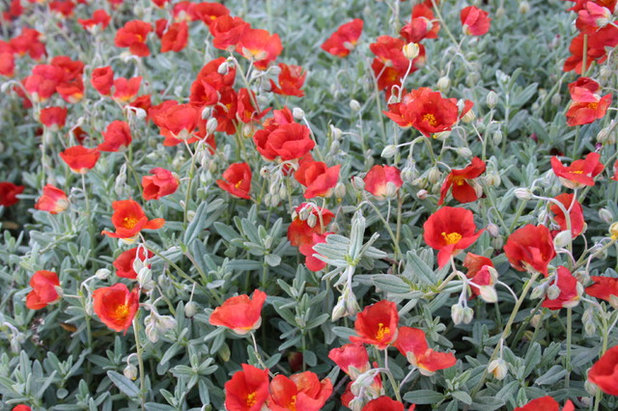
Genevieve Schmidt
If I could have only three colors in my garden, I would add an orange or a red to the mix of gray and green. This orange-red color lies across the color wheel from this steel blue-gray, which makes both of the colors stand out.
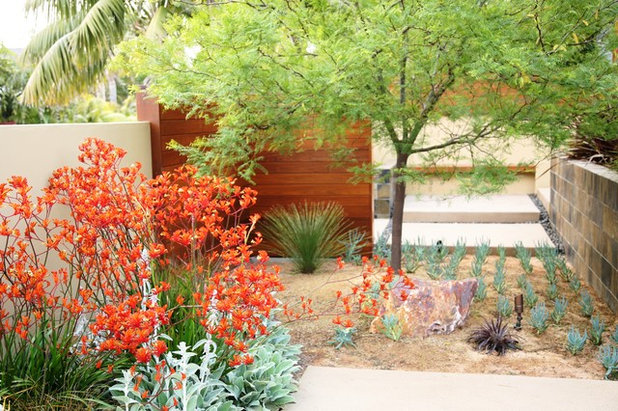
debora carl landscape design
Best Colors With Gray PlantsAll shades of orange work well with grays and blue-grays, including this yellowish orange. Try placing a shot of gray anywhere you want an orange-colored blossom to shine. You'll be surprised by the contrast.
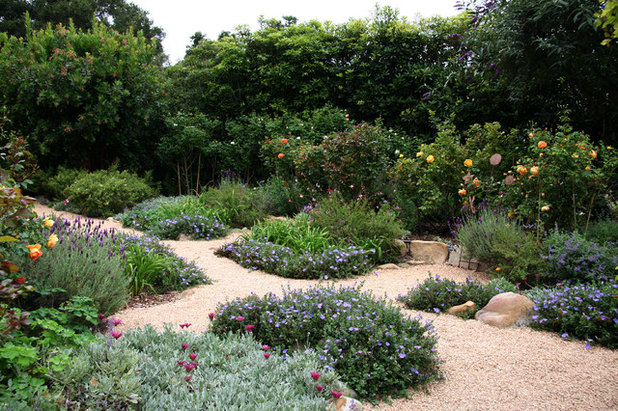
Donna Lynn - Landscape Designer
Vivacious magenta is another classic pairing with gray. The two colors bring out each other's blue tones.
Wake Up Your Garden With Magenta Magnificence

Timothy Sheehan, ASLA
Lighter pinks, shades of maroon, aubergine and even lipstick red are also great pairings with gray.
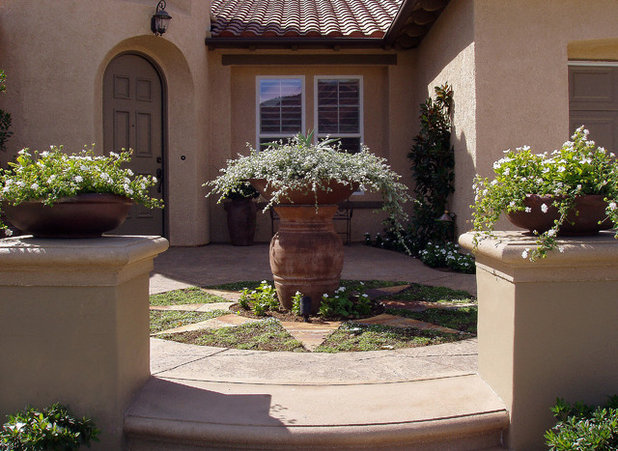
Donna Lynn - Landscape Designer
Try using gray against copper accents. The two metallic tones complement each other and give a cool and refined look to any space. Slightly aged copper paired with gray plants is one of my absolute favorite combinations in the garden.
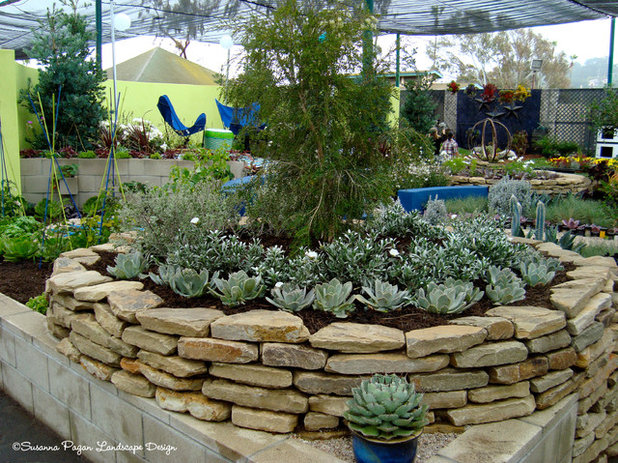
SP Gardens - Susanna Pagan Landscape Design
Designing a Garden With Gray Foliage
Gray gives a nice contrast and grounds larger plants when it's set around the base of a green tree or shrub. A second layer of gray in a slightly different shade adds more texture and depth.
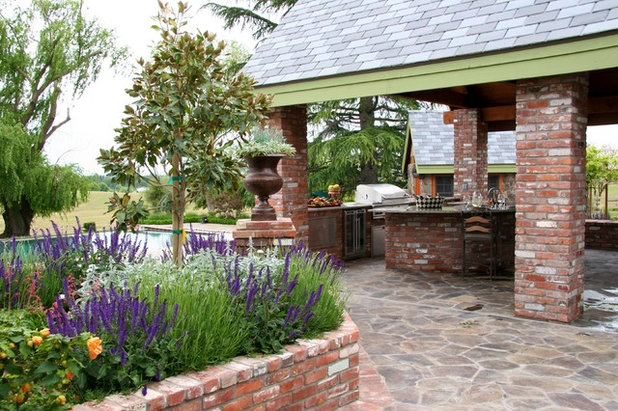
CLK Construction
In the same manner, a base of gray surrounding a small tree breaks up a sea of green here. The contrast draws the eye immediately to the focal point of the planting.

Shades Of Green Landscape Architecture
Try using gray as an edging plant to set off larger yellow-green plants. The contrast makes a defined line and lifts the eye up to the focal-point plant.
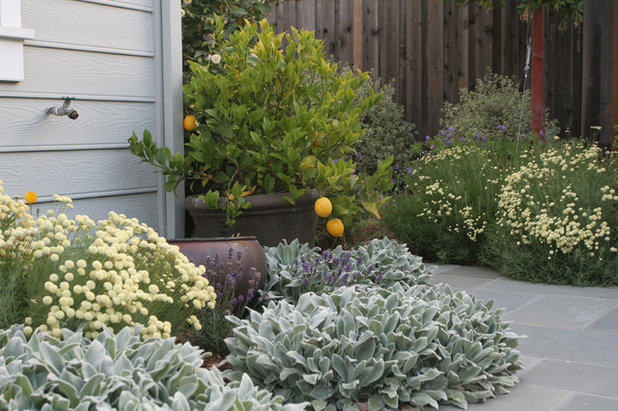
Shades Of Green Landscape Architecture
Great Gray PlantsLamb's ear is a prolific, spreading bear of a plant, but I still love it for its gray tones. Even with its soft, fuzzy leaves and ability to flourish in harsh locales, the color is the best part of this plant.
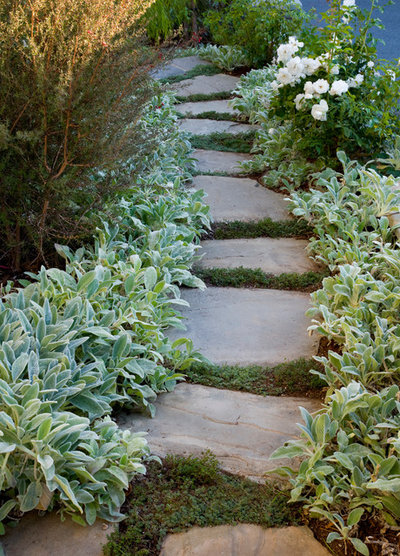
Stout Design-Build
Try using mounds of lamb's ear to break up banks of green along a pathway, or even try making a pathway completely out of lamb's ear. Can you imagine how wonderful that would feel on your feet? Watch out when they bloom, though — the bees love them, too.
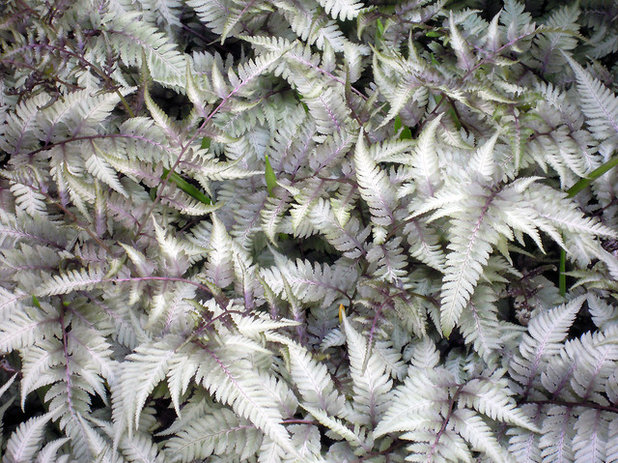
Grays are fabulous for a shady garden, particularly in lighter shade. A painted fern or gray-leaf astilbe will light up a shady spot in your garden.
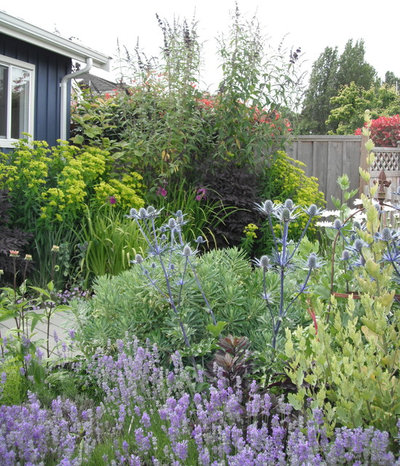
Glenna Partridge Garden Design
Whether you're adding a little Sea Holly to perk up a cottage garden, brightening up shady corners with silver standouts or accenting a path with gray foliage, this subtle hue can make a giant impact.
Working in the background, it sets greens in relief from one another, brings out cool tones in various colors and serves as a visually interesting aspect of the garden even when nothing is in bloom.
I can't say enough about the benefits of a few shades of gray in your garden. Perhaps you could even find 50. Wouldn't that make for a lively garden?
More: 6 Stunning Silver-Leaf Plants





